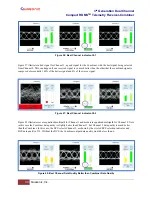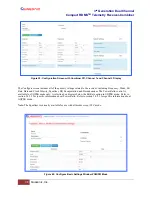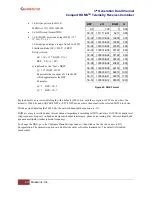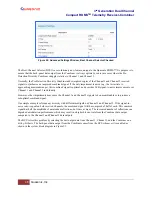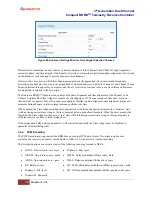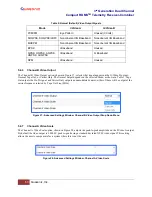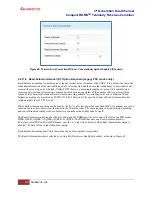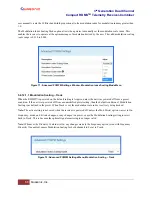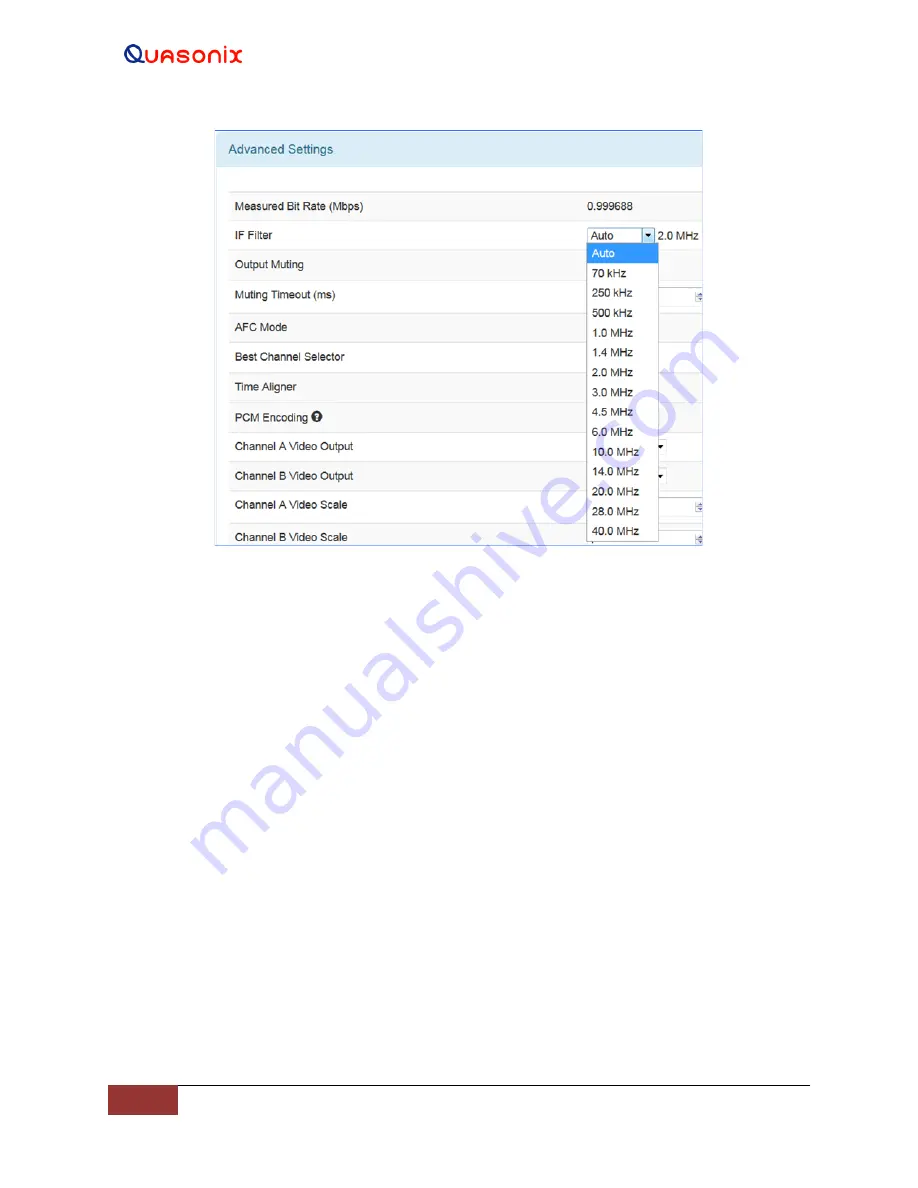
3
rd
Generation Dual Channel
Compact RDMS
TM
Telemetry Receiver-Combiner
44
Quasonix, Inc.
Figure 50: Advanced Settings Window, IF Filter Menu
5.4.3.3
Output Muting
The Output Muting option sets the muting value to On or Off. When Output Muting is set to On, the receiver stops
sending clock and data information when the timeout value is reached. This option is beneficial to someone using a
recorder with limited space. For example, if data is not locked to a valid signal or is outside the valid range, the
information is muted (stopped) so the recorder is not filled with bad data.
5.4.3.4
Muting Timeout
The Muting Timeout option is used to set a timeout value (in milliseconds). This setting is used to determine when
to mute (stop sending data) when the Output Muting option is set to On. The valid range is 0 to 46016 milliseconds.
The default value is 1000.
5.4.3.5
AFC Mode
The AFC (Automatic Frequency Control) Mode option, shown in Figure 51, compensates for frequency offset in the
received signal relative to the expected carrier frequency. Demodulators for all modes in the RDMS™ contain
frequency-tracking loops that can accommodate some amount of frequency offset. The amount of offset that can be
tolerated depends on the mode and is generally a small percentage of the bit rate. If the input frequency offset is
greater than this amount, then AFC is needed to make up the difference.
The two main sources of offset are (1) reference oscillator frequency differences between the transmitter and the
receiver, and (2) Doppler shift. Reference oscillator differences are constant or very slowly time-varying. Doppler
shift, by its nature, tends to be dynamic. The optimal AFC mode depends on the source and magnitude of the
frequency offset. Valid selections are Off, Hold, and Track. In general, Quasonix recommends setting the AFC
Mode to Off, if possible.

